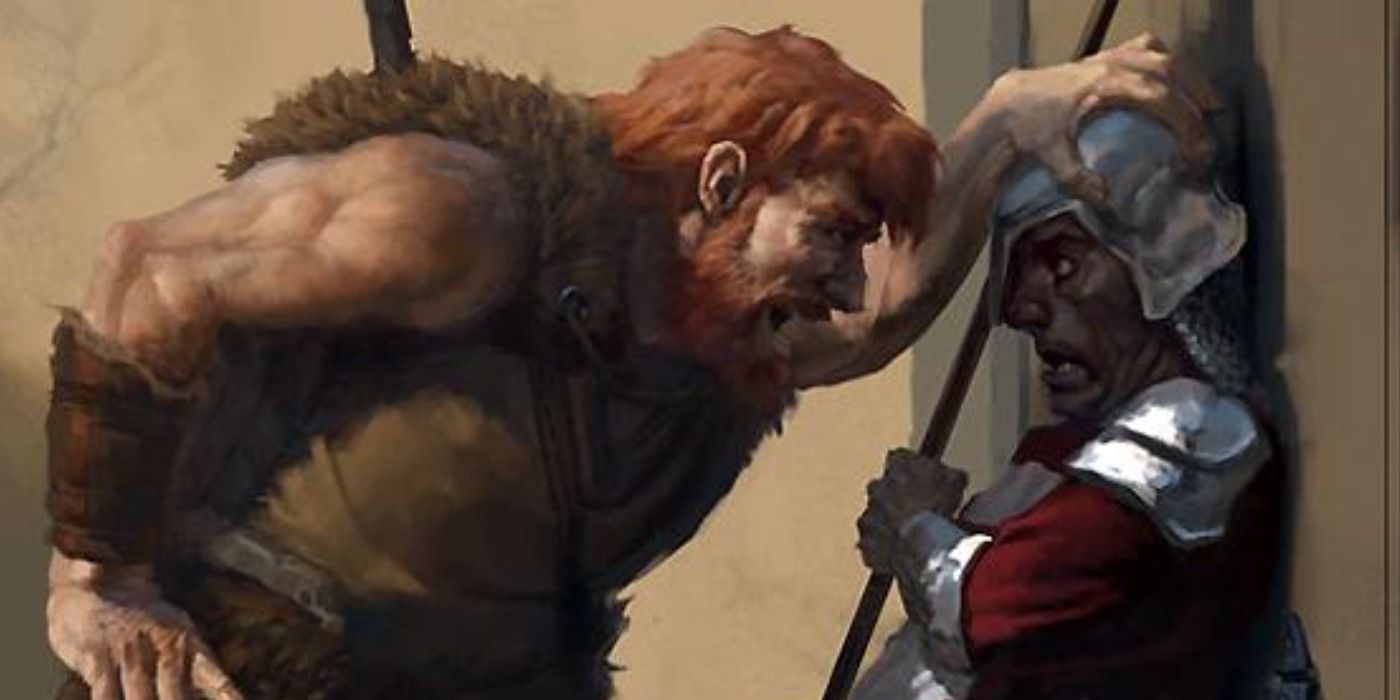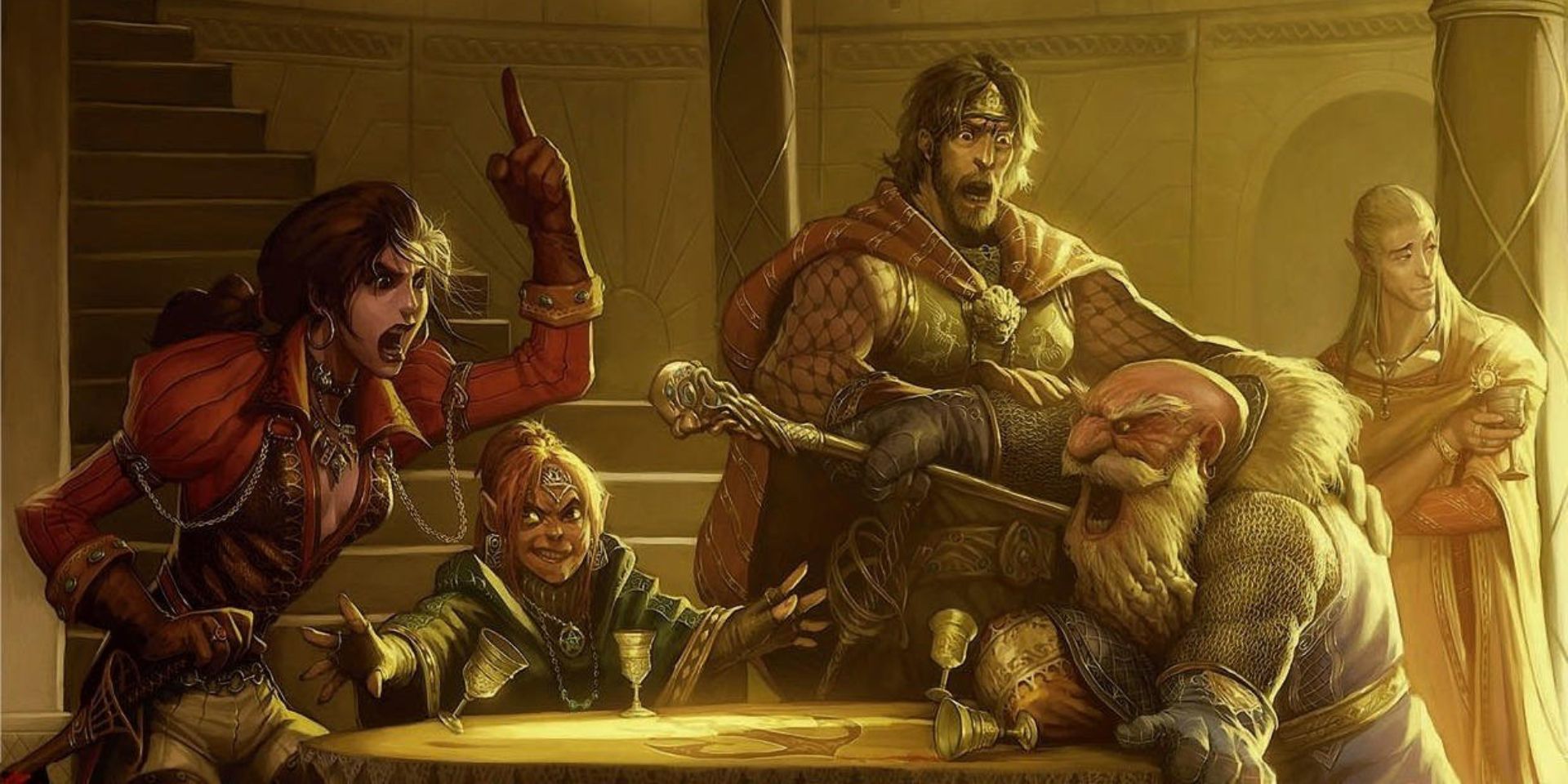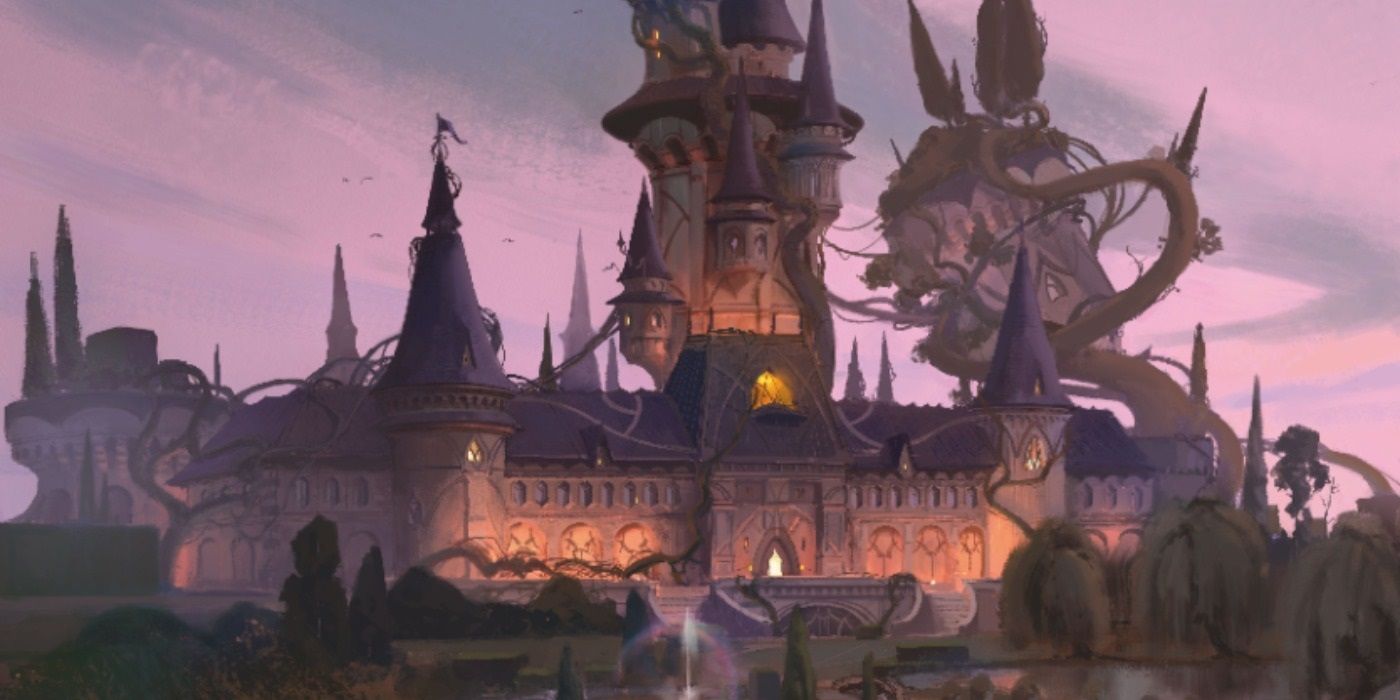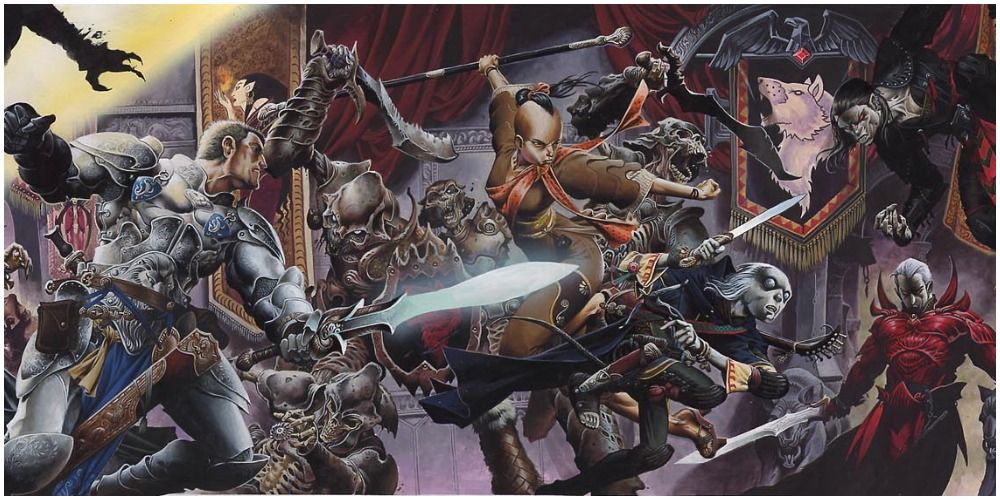It's common for a Dungeons & Dragons party to have rivalries among its members, especially in instances where characters fill similar roles in the group. There are times when players will want to test their skills against their fellow party members, which is where the PvP battle comes in. A PvP battle allows players to fight each other, without derailing the D&D campaign.
D&D, at its core, is all about teamwork. The party consists of characters with different abilities and capabilities, who must pool their talents to overcome enemies and obstacles. The players will quickly learn that they need to rely on each other in the wilderness, as most adventures involve traveling into dangerous territory, and the enemies they will meet in dungeons won't show them any mercy. A group that refuses to work together will soon find themselves in deep trouble, as only a unified party has a chance of surviving.
The time may come when the players grow weary of fighting monsters and foiling plots and decide to take on the greatest threat of all - another human player. This has the potential to ruin a Dungeons & Dragons campaign, as players allow petty rivalries to overshadow the plot, which could potentially lead to ill feelings developing among the group. If the players are determined to fight each other, then there are ways to have them duke it out, without spoiling the fun for everyone.
D&D PvP: Keep Player Battles Non-Canon & Light-Hearted
The most important aspect of any PvP battle is to keep it as light-hearted as possible and ensure that it's non-canon to an existing campaign. If two players want to have a scrap in an existing campaign to prove they are the best, then there are ways to accommodate them without being too disruptive. Melee fighters can have a duel using blunted training weapons that won't permanently harm their opponent, and spellcasters can compete to see who can create the most impressive effect.
The Death's Door rule should make it easy to avoid accidental deaths in combat, especially if there is a cleric to throw a healing word spell onto the battlefield if things get too dangerous. The problem with using this method is that it can lead to ill feelings on the part of the losing player, and can make the winning player act in an insufferable manner. D&D is all about friendship and teamwork, and creating a tier list of usefulness among the players can quickly lead to disagreements and resentment among the party.
The best way to run a PvP battle for the players is to keep it non-canon. It's easy to handwave it away as just being a dream, or maybe some interdimensional being is forcing the players to fight for their amusement (kind of like Beyonder from Marvel Comics), taking them to a pocket plane that was created for the sole purpose of battle. Once the fight is over, everyone is resurrected and healed, has their memory wiped, and is sent back to their home dimension. The fact that the event is non-canon means that it can't be brought up in-game. A non-canon PvP battle should be presented as a bit of fun and can be used to liven up a D&D session that is heavy on narrative or backstory. It can also be used to fill time if the DM has run out of material for the session.
D&D PvP Will Need A Suitable Battlefield
Throwing the players into an empty arena like the one from the World Martial Arts Tournament in Dragon Ball presents a number of issues. If the arena is small, then the melee characters will have an advantage, as they can quickly close the gap and unleash all of their special abilities against the spellcasters, to take them out as quickly as possible. If the arena is massive, then the ranged characters will have the advantage, especially spellcasters. It's best for DMs to have battlefields with special D&D gimmicks that players can make the most of. This will reward strategic thinking and help keep the players on their feet. A few ideas that can be used include:
Tower Defense - The battlefield has a stone tower in the center of the arena. The tower has arrow slits for archers, which ranged characters can use to fire at enemies while receiving a cover bonus. The defensive advantages of the tower are obvious, but the lack of windows or escape routes means that it also limits mobility. If a melee warrior manages to breach the tower, then the inhabitants won't have anywhere to run.
The Maze - The battlefield consists of a maze of corridors, rooms, and large open areas. The map is composed of separate pieces, where the edges all line up in the same way. The players all start in a different part of the map and must track each other down. Every few rounds, the map is shuffled in D&D, and the maze changes. Two players who are caught in a battle might suddenly be separated, either giving them a chance to have a breather and heal up, or thrusting them into an encounter with a new foe.
The Dollhouse - The battlefield takes place within a massive mansion, where the windows are sealed by an impenetrable barrier. What the players won't realize at first is that every room in the house follows a specific rule, which ends once they go into a corridor or a new room. The rules can include an antimagic barrier existing in the room at all times, characters being able to benefit from a short rest after one round of closing their eyes, a magnetic force that slowly drags all metal items to the floor, or certain damage types healing enemies instead of harming them. The players can be tipped off about the rules through riddles written on the doors or walls.
D&D PvP Can Take Inspiration From Battle Royales (Hazards, Items, & Traps)
A fight between players has a chance of becoming tedious in D&D. They will most likely play defensively, run when in danger, or try to win through attrition. This is because they are on their own and don't have allies to support them, so they'll use more boring tactics to achieve victory. The DM can spice things up by taking inspiration from the battle royale genre of video games and adding hazards and rewards to the arena. The hazards can include weak enemy units that pop up to harass the player if they stay in one area for too long, or environmental hazards that cause areas to become inhospitable after a number of turns have passed, including poison gas and acid fog.
By the same token, the battlefield could also include magic items to empower the player, with the usual attunement rule ignored for the fight. Potions are a perfect fit for this scenario, especially healing ones, as they are one-off effects that can be used by anyone. Items like Boots of Speed, Deck of Illusions, and Dust of Disappearance are also a good fit for a PvP fight. A straight-up fight between the party runs the risk of being boring, so a gimmick battle royale can make the most of what Dungeons & Dragons has to offer.




